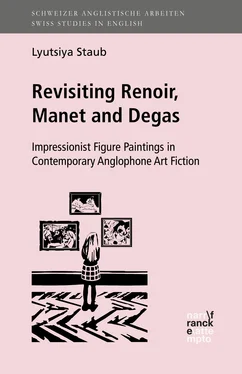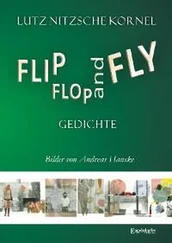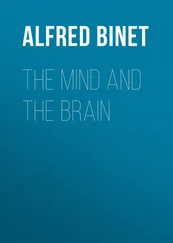Whereas visual art works are usually claimed to only represent on a surface level, they in fact do create something similar to what narratives achieve in the reader’s minds, and the gaps that appear through the static representation of the painting are then filled in by the beholder. (23)
As a matter of fact, both a reproduction of an image and a narrative text contribute substantially to the general perception of an intermedial artefact by filling in visual as well as textual gaps that might be left open in art fiction. In the case of ekphrasis of an extant artwork, the reader has an opportunity to examine visual and verbal evidence; hence, the reader is no longer expected to rely solely on his/her imagination. A work of art translates a story into a visual form, while pictorial descriptions of an art object allow a back-translation from verbal into visual. Therefore, pictorial elements introduced in a literary work merge intermedial boundaries. Krieger points out the advantages of incorporating a work of art into a literary text:
If an author is seeking to suspend the discourse for an extended, visually appealing descriptive interlude, is he not better off – instead of describing the moving, changing, object in nature – to describe an object that has already interrupted the flow of existence with its spatial completeness, that has already been created as a fixed representation? Surely so: if he would impose a brief sense of being , borrowed from the plastic arts, in the midst of his shifting world of verbal becoming , the already frozen pictorial representation would seem to be a preferred object. His ekphrastic purpose would seem to be better served by its having as its object an artefact that itself not only is in keeping with, but is a direct reflection of, that purpose. Further, if one justification for the verbal description is to have it – for all the uncertainties of its words and our reading of them – complete with the visual object it would describe, the comparison would seem to be stabilized on one side by fixing that object so that, as an actual artefact, it can be appealed to as a constant, unlike our varying perceptual experiences of objects in the world. (“The Problem of Ekphrasis ” 8)
Confronted with a representation of an artwork in intermedial form, the reader is therefore exposed to a new, as it were contemporary, experience of producing intermedial meaning, the characteristic feature of which is the possibility of multiple interpretations. As noted by Eco, “every reception of a work of art is both an interpretation and a performance of it, because in every reception the work takes on a fresh perspective for itself […] like the components of a construction kit” (4). Furthermore, McLuhan points out that the moment two media are merged is “a moment of truth and revelation from which new form is born, […] a moment of freedom and release from the ordinary trance and numbness imposed by them on our senses” (55). Therefore, the binary semiotic form of an intermedial product influences the perception of a given re-presentation and leads to diverse re-interpretations. The question is bound to arise as to whether such a hybrid work challenges conventional doctrines of the disciplines involved. With regard to narrative and the visual arts in particular, this challenge might presumably face art historians by urging them to consider intermedial artefacts as possible perceptual and interpretive models of a piece of art. Moreover, as Albers points out, a narrative text can, as a part of a verbal-visual hybrid, “shed additional light on aesthetic topics in that it employs art as taking on different forms and carrying various functions within and beyond the narrative [and can] address several of the reader’s senses through its spatio-temporal extension” (26). In other words, by making an artwork ‘speak’ a narrative text raises pertinent questions not only about the elements of art (line, shape, form, colour, value, texture and space) but also about the meta-textual aspects of painting, such as socio-historical and cultural issues, as well as the functional value of an artistic creation. Consequently, art fiction transfers historical knowledge into fictional discourse and, at the same time, offers a potential re-interpretation of the work of art, which in turn may enrich its original meaning.
The ways visual arts can be incorporated into a verbal medium are myriad. The most common practices of registering the co-presence of text and image in an intermedial artefact based on an extant work of art, however, can be reduced to the following three possibilities: 1) the integration of image reproductions that establish the physical co-presence of the medium; 2) ekphrastic re-presentation through direct or indirect referencing (the description of all or of selected details and association to, e.g., a particular art movement); 3) interpretation given by a story’s actants, whose perception of art not only classifies them into various types of viewer (by revealing their attitudes and opinions) but can also be seen as a meta-commentary on both a specific work of art and, e.g., art movements in general. By considering these intermedial practices, the present study suggests a framework of three categories of intermedial relations. However, before examining perception, re-presentation and interpretation of an artwork in the field of intermediality, it is necessary to make explicit what exactly is meant by ekphrasis and ekphrastic re-presentation, the central concepts in the study of the interaction between verbal and visual media. The following section provides a brief overview of the diachronic evolution of the definition of ekphrasis and the diversity of the intermedial relationship it produces.
2.1.1. Evolution of the Definition of Ekphrasis
There is no consensus on a single definition for the phenomenon commonly referred to as ekphrasis ,1 either on its meaning or its function. One of the key problems in providing a single, legitimate definition of ekphrasis is the diversity of word-image relationships it encompasses. Situated in the field of intermediality , and loosely defined as “a particular relation […] between conventionally distinct media of expression or communication” (Wolf, The Musicalization of Fiction 37), ekphrasis allows different types of intermedial interactions, not only between verbal and visual artforms, but also across other media, such as architecture, photography, music2 and cinematography.3 The present study, however, focuses only on intermedial interaction between the verbal and the visual, more precisely, on rendering physically existing paintings (the visual) in the context of contemporary ekphrastic art fiction (the verbal). As Wagner points out: if, in fact, “critics agree at all about ekphrasis, they stress the fact that it has been variously defined and variously used and that the definition ultimately depends on the particular argument to be deployed” ( Icons – Texts – Iconotexts 11). This chapter will provide a diachronic overview of various definitions given to ekphrasis and analyse the points of agreement and controversy among scholars.
The word ekphrasis is of Greek origin; according to its etymology it is composed of two Greek words: “ ek (out) and phrazein (tell, declare, pronounce)” (Heffernan 191), which renders its meaning as “to speak out” or “to tell in full”. However, the meaning of ekphrasis has undergone many revisions throughout its existence:
First employed as a rhetorical term in the second century A.D. to denote simply a vivid description, it was then (in the third century) made to designate the description of visual art… But it has not been confined to that meaning. In its first recorded appearance in English (1715), it was defined as “a plain declaration or interpretation of a thing” (cited OED ), and in a recent handbook of rhetorical terms it is called simply “a self-contained description, often on a commonplace subject, which can be inserted at a fitting place in a discourse…”(Heffernan 191)
Читать дальше












